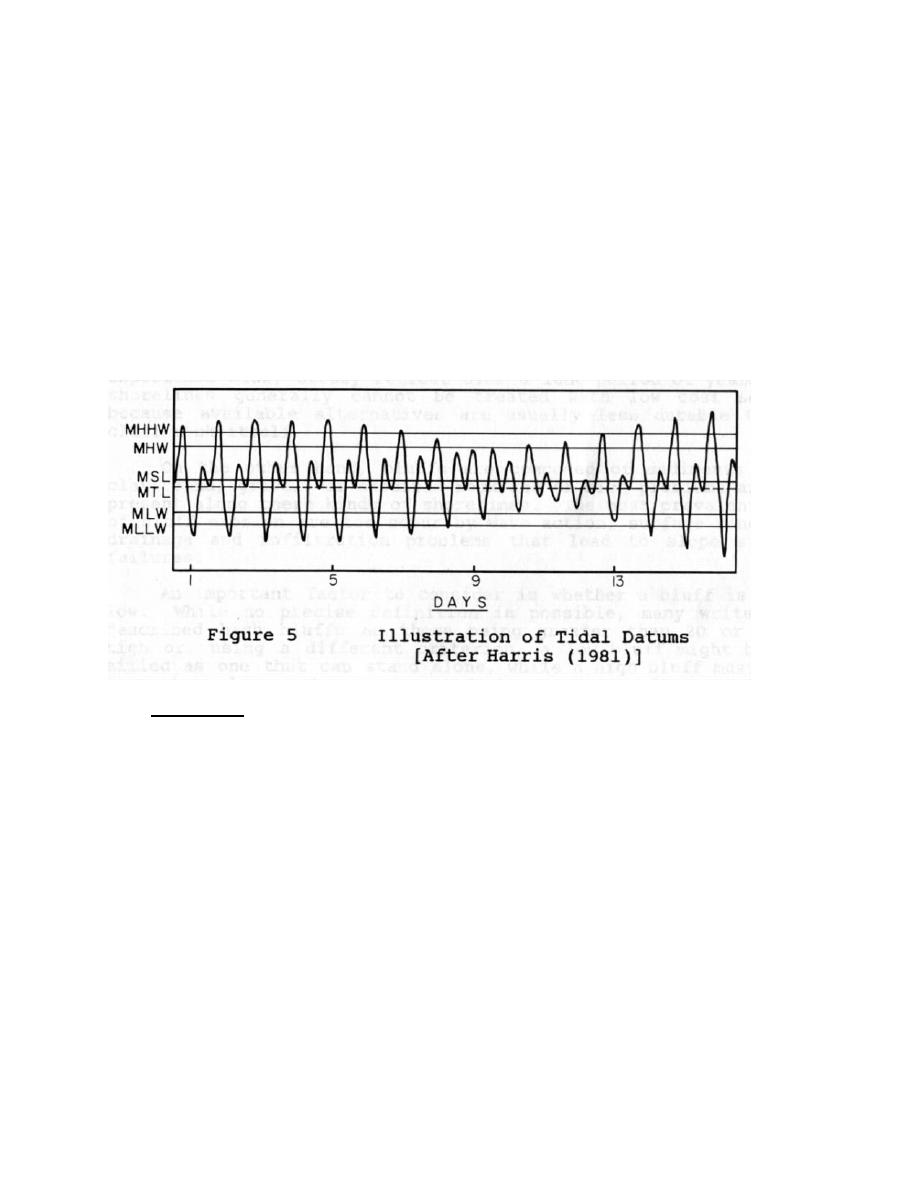
In addition, the tidal range, or difference in elevation between the high and low waters, tends to
fluctuate throughout the month. These tidal range variations are caused by changes in the distance
between the earth and moon (perigean and apogean tides), the declination of the moon (equatorial and
tropical tides), the declination of the sun, and the phase of the moon (spring or neap tides). (See
Glossary.) The tides are highest during spring, perigean and tropical tides and are particularly high when
these are approximately in phase.
Tides are also present on the Great Lakes, but they are small and not significant for practical
problems of shore protection design.
Some key tidal datums, shown on Figure 5, are important because of their wide use. Not shown
are datums for the Great Lakes, where all levels are ultimately referenced to the International Great
Lakes Datum (see Glossary). Each lake has a designated chart datum [Low Water Datum (LWD)] based
on the IGLD.
Storm Effects. The passage of storms tends to increase the Stillwater level through two principal
mechanisms: atmospheric pressure effects, and stress caused by storm winds blowing across the water.
Atmospheric pressure differences across a large water body cause a rise in the water level in the lower
pressure area (inverse barometer effect). Water surface rises of one or two feet are common in many
areas under this effect.
Enclosed water bodies (such as the Great Lakes) can also respond to storm forces by seiching.
This occurs when storm winds or pressure effects drive the water surface higher at the downwind end of
a lake. The passage of the storm front releases this water, and causes a periodic oscillation within the
basin that will continue for several cycles. On the Great Lakes, seiching is most pronounced on Erie,
because its long axis more closely matches predominant storm tracks and its relatively shallow depths
lead to higher storm setup levels.
Wind stress also tends to drive the water on shore to above normal heights (storm setup). This
continues until the tendency for the water to flow back to its normal level balances the forces driving it
on shore. The high winds associated with storms also generate large waves, with their effects being felt
in addition to the elevated storm surge levels.
13



 Previous Page
Previous Page
